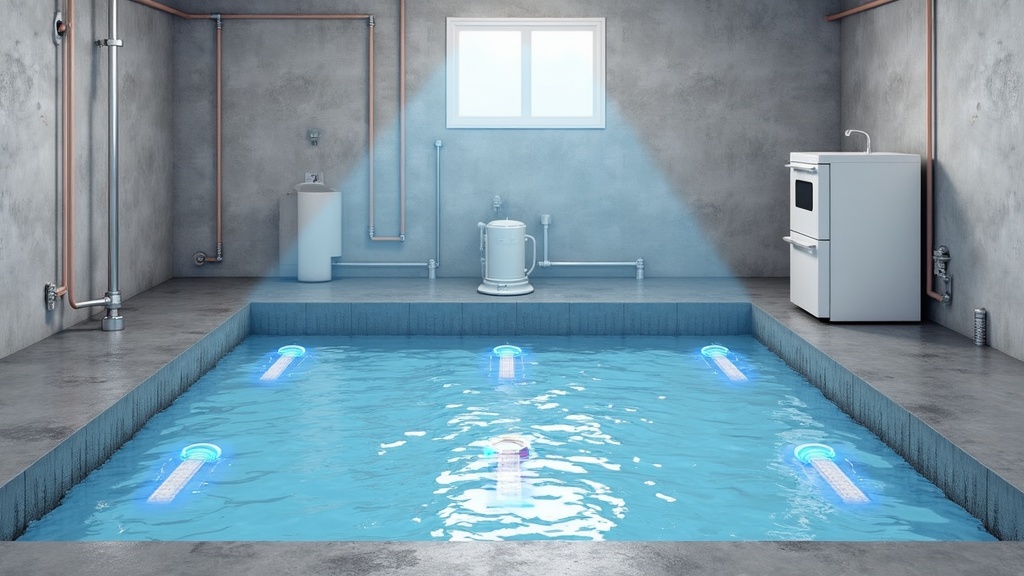Basement flooding is one of those home disasters that can send stress levels through the roof, especially during storms or heavy rains. When water sneaks in, it’s not just about the mess—there’s the risk of mold, damaged belongings, and even problems with the building itself. Underwater flood detection sensors are becoming a smart way for homeowners to dodge surprise water damage and keep their basements dry and safe. I put this guide together to help you understand how these sensors work, their benefits, and what you should look for if you’re thinking about getting one for your home.

What Are Underwater Flood Detection Sensors?
These sensors aren’t too complicated once you break them down. They’re usually small devices designed to sense the presence of unwanted water in your basement or crawl space. When water goes where it doesn’t belong, the sensor detects it and usually triggers an alarm, sends a notification to your phone, or both. Some models can even connect to smart home systems, so you can monitor your basement from anywhere. The idea is pretty simple: catch water leaks or floods early, so you have time to react before things get out of hand.
Why Smart Basements Rely on Flood Detection Technology
Flood detection technology has come a long way from basic float alarms and moisture strips. Today’s sensors use a mix of conductivity (checking if there’s water bridging a gap), Bluetooth or WiFi, and sometimes even integration with your home security gear. Smart sensors can also trigger connected sump pumps or shut off valves automatically, giving a boost to your home’s overall safety. With some setups homeowners get real-time updates sent to their phones, plus a local alarm goes off right away if water is detected. This means you get more than just a warning; you get a shot at stopping the damage before it starts.
How Underwater Flood Sensors Work: The Basics
Most sensors rely on the idea that water conducts electricity. Here’s a quick rundown:
- Flood sensors usually have two or more contact points at their base. If water touches both, it closes a tiny loop and tells the sensor that water is present.
- Some systems offer “probes” or extension leads so you can reach tricky areas or cover a wider space.
- Wireless sensors can run on batteries for years, but wired ones tap into your home’s power and often have backup batteries too.
- Many smart sensors will communicate with a hub or directly to your phone over WiFi or Bluetooth, so you’re notified even if you’re not at home.
Placement is key. Unlike smoke alarms, flood sensors need to be where water might actually collect, like near sumps, at the base of basement stairs, or around appliances like water heaters or washing machines.
Getting Started: Choosing the Right Flood Detection Sensor
When you start searching for a flood detection sensor for your basement, you’ll see a lot of choices—from basic standalone alarms to systems that work with Amazon Alexa, Google Assistant, or Apple HomeKit. Picking one depends on your needs, budget, and how plugged in you want your security setup to be.
Here are some handy questions to help narrow things down:
- Do you want a simple, audible alarm or remote notifications to your phone?
- Is full integration with your smart home system important?
- Would you rather have a system that can trigger sump pumps or water valves?
- How much space do you need to cover, just a single trouble spot or do you want coverage near multiple appliances and corners?
Entry level models usually just alarm in place, while midrange versions add app notifications. High end sensors offer integration, voice assistant compatibility, and can sometimes coordinate with professional monitoring services.
Best Practices: Where to Put Your Water Leak Detectors
Sensor placement can really make or break your basement flood protection. As a rule of thumb, install detectors in spots with the highest risk of water getting in or leaking:
- Near your sump pump, in case it fails or gets overwhelmed
- Along basement walls, especially the lowest point where water tends to collect
- Beside your water heater, washer, and HVAC system
- Under pipes, especially if you have a history of burst pipes when the weather gets cold
- Close to basement windows or doors, especially if you’ve seen seepage before
Most folks set sensors directly on the floor, but some come with ropes or leads so you can snake them into crawl spaces or hard to see places. Regularly checking the batteries and giving the sensors a quick test helps keep your system reliable.
Are Water Leak Sensors Worth It?
Absolutely. Water leak sensors are more than just a “nice to have” for many homeowners. Basement floods can cost thousands of dollars in repairs, not just fixing floors and drywall but also replacing ruined furniture, electronics, or treasured belongings. Flood detectors are often less expensive than most deductibles and can mean the difference between catching a leak early and dealing with a major cleanup. Plus, many insurance providers give small discounts for having these sensors in place, recognizing that they prevent a lot of headaches. Considering the peace of mind and the amount of time and money saved, these sensors are well worth checking out. Even if you think your home is low risk, a tiny leak can snowball into a big problem, so sensors can really take up your basement safety game.
Comparing SWS0A and SWS51: What’s Different?
While shopping, you might come across model numbers like SWS0A and SWS51. Both are flood sensors, but there are a few differences:
- The SWS0A usually refers to a simpler model. It might be wired or battery operated, with a basic water detection function and a loud local alarm. This kind is solid for people who just want a clear alert without smartphone features.
- The SWS51 tends to be a step up, often offering wireless capability, smartphone notifications, and sometimes integration with home automation systems. These add convenience if you want real time phone alerts, even when you’re not home.
It really comes down to your setup. If you’re fine with a local alarm and want a budget friendly approach, SWS0A fits the bill. If remote monitoring is important or you want to connect with other smart home features, SWS51 is worth considering.
Cost Breakdown: Installing a Water Leak Detection System
Budgeting for water leak sensors depends on a few things: the number of sensors, if you want them smart connected, and the cost of any installation (if you don’t want to DIY it). Here’s a rough breakdown:
- Standalone sensors (basic alarms, no WiFi): $10–$40 each
- Smart sensors with app notifications: $30–$100 each
- Full basement systems (hub, multiple smart sensors, optional valve controls): $150–$400+
- Professional installation (optional): $100–$300, depending on the complexity and how many sensors you want installed
Many people find installing these sensors pretty easy, especially the wireless ones; you just put batteries in and set them down. The pricier smart systems usually require a bit more setup or possible connection to home automation, which some might prefer to leave to the pros. If you’re handy and enjoy easy tech DIY, even the smart models can be set up without much trouble—just follow the instructions and app prompts.
Extra Tips for Maximizing Flood Sensor Value
Just getting a sensor isn’t enough if it can’t do its job when needed. Here are a few things I always recommend:
- Test sensors monthly. Just pour a bit of water by the contacts to check if you get an alert or alarm.
- Replace batteries yearly or as needed. Some models send phone alerts when batteries are low.
- Consider combining sensors with automatic shutoff valves, especially if your home’s at higher risk for burst pipes or heavy flooding.
- Check if your insurance provider offers discounts for having water leak sensors or a connected water shutoff system in place.
- Review your setup after a few months. See if any sensors could benefit from being moved to catch water faster, or if you need to add another sensor in a trouble area.
If your house has a finished basement, or you store valuable items downstairs, don’t overlook adding a few extra sensors—even a small leak can mess up flooring, walls, and cherished keepsakes. The peace of mind that comes with knowing you’ll be the first to know about water problems is reassurance every homeowner deserves.
Frequently Asked Questions
Here are answers to a few common questions from homeowners looking at flood detection for their basements.
Are water leak sensors worth it?
For most homes, yes. The potential savings, both in cash and stress, outweigh the cost, especially if you’ve ever dealt with a water leak before.
What is the difference between SWS0A and SWS51?
SWS0A is a basic, usually wired or battery alarm, while SWS51 tends to be wireless, smart, and often provides mobile notifications. Both work, but SWS51 has more tech options.
How much does it cost to install a water leak detection system?
Depending on how smart and wide reaching you go, anywhere from $10 for a single spot sensor to $400+ for multiple smart sensors with pro installation. DIY can save you some cash, especially for simple setups.
Where is the best place to put a water leak sensor?
Set them near sumps, water heaters, washers, entry points, and anywhere water might sneak in. The lowest part of the basement is usually a good call too.
Final Thoughts on Smart Flood Prevention
Water leak sensors can play a big role in keeping your basement dry and your home safe. They’re straightforward to use and give you a head start if problems pop up. Whether you go for a simple one with an alarm or connect up a whole smart system, staying alert to water leaks in the basement can seriously cut down on risk and drama. Careful setup and maintenance help you get the most out of these handy devices, and the tech is only getting easier to use. Wrapping up, keeping an eye out with the right sensors is often well worth the investment for peace of mind and home safety.
